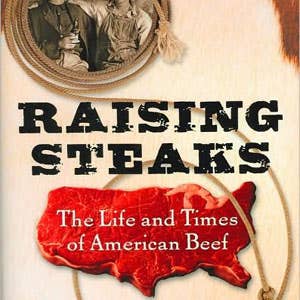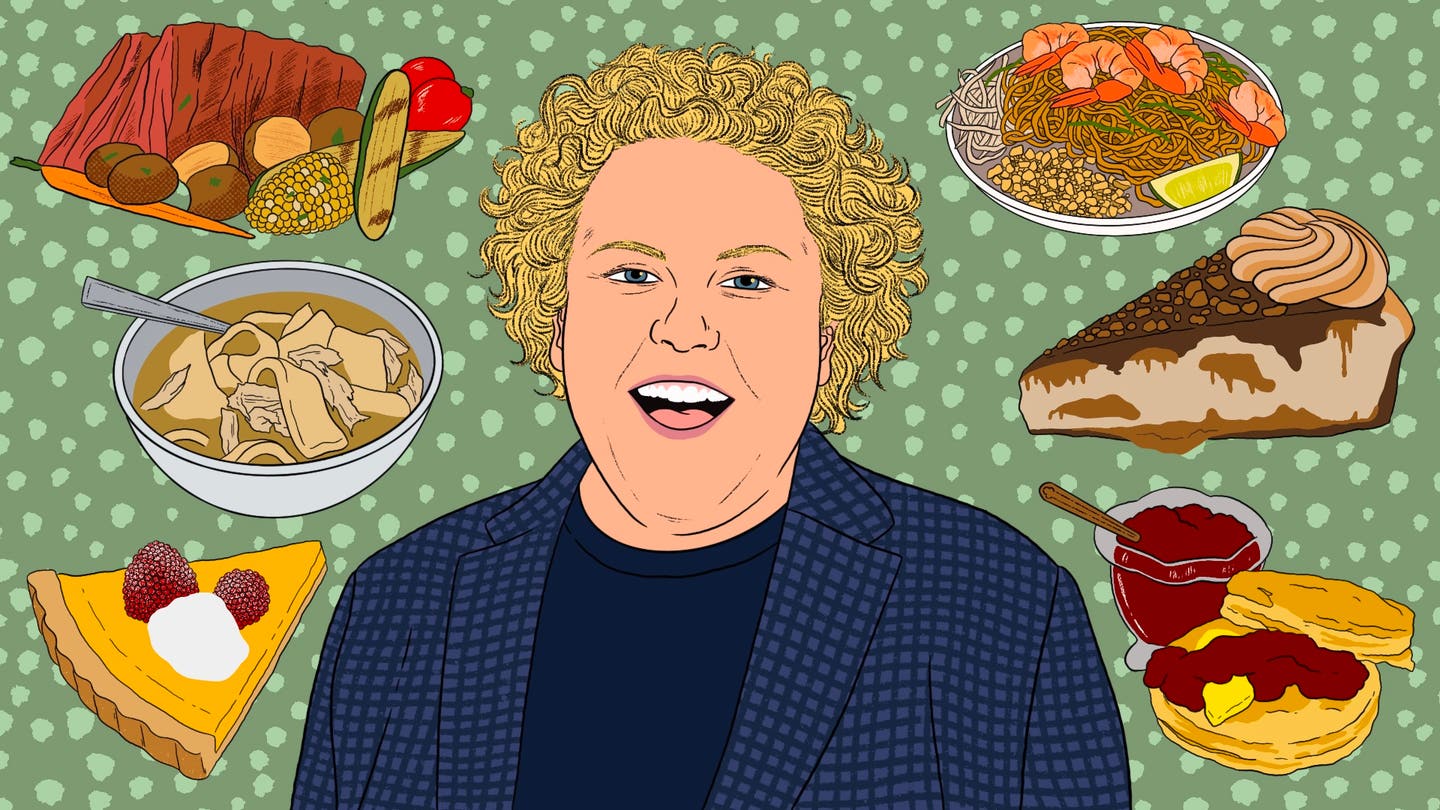
From Corn to Beef: Betty Fussell’s Take on American Food
California-born Betty Fussell has been writing about food for more than 25 years. She made public the pervasive presence of subsidized and industrialized grain in her 1992 book The Story of Corn, winning the International Association of Culinary Professionals' Jane Grigson Award. Her latest book, Raising Steaks: The Life and Times of American Beef, takes a stab at how America's past and future is inexorably linked with its iconic beef dish of choice. The 81-year-old author talked with SAVEUR about the state of steak today during her book tour.
Saveur: You've written about corn twice, and you say that you "didn't realize American beef had become as much an industrial by-product of corn as ethanol is". Can you speak about your thoughts on the state of American agriculture and farming today?
Betty Fussell: When I was investigating corn, it was the 1980s. That was 25 years ago. In this country, we go very fast. We hadn't even instituted the rigors of corn-fed processing until just 25 years before that. It took that long for people to understand what was happening because of the speed and volume with which it occurred—which is always true with us. You know, people say, "Let's go up to the moon." And then within five years, they say, "Oh! We have!" So then we have people saying, "Oh, let's feed cows corn." Whoops! Now we have an entirely corn-fed industry. When I was looking at corn, it was very much in the past: where it got started and how we were a corn-based nation economically. I didn't realize its intimate ties to beef, because that was just happening, and it has only increased in the past 25 years with corn. Structurally, it has marginalized every other method of raising cattle.
Saveur: You've been interested in food and writing about food for decades. In your opinion, what have been the most significant changes or trends that you've noticed or that you can put your finger on?
BF: I think we're at a huge shift in all of our economy, which includes agriculture. We have had a century and a half of an industrial machine that is capable of a great deal of speed but that was based on the steady supply of cheap oil. Industrial corn has immense implications around the world in terms of global trade. It produced a grain that could be utilized in every possible form in a way that petroleum could not. Then, it's very logical that the things that you raise [on corn], like pigs, change the diet of the world [because it makes] meat, as well as exporting meat, cheap. We became the world's largest exporters of all of those. The oil base gets shaky. Whoops! The whole building comes tumbling down. As we've seen, we're in free fall right now. We'll see where that's going to end up. There will certainly be a shift of power.
The green movement, in contrast to the results of this overprotected industrial invasion, has made more inroads. The organic market makes up almost 25 percent of our produce. Whoa! That's huge! It's taken 30, 40 years to get there, but these are different kinds of organizations. This [movement] is from the bottom up.
Saveur: Would you say that is directly connected to the resurgence of butchers and sustainable farmers? Would you say that is a reaction against the way our society has developed?
BF: There's always a contest going on: when something gets big and enormous and holds everything up, there is always dissension.
Saveur: You call the American beefsteak "more characteristic of our hybrid national identity" than apple pie, popcorn, or the hamburger. What other food item would you say ranks high as characteristic of our nation's hybrid identity?
BF: Corn on the cob was up there early on, and pumpkin pie. Now that we have the holidays coming up, actually, the turkey is this hybrid identity. We hijacked the native foods, which was our basic colonizing act. We came in and took over another culture, but then, as the conqueror, we were captivated by whom we took over.
Saveur: In the book, you point out that the railroad barons of the East contributed as much to the psyche of the American West as the cowboy and the cattle trails. But we still seem to romanticize beef with cowboys and Stetson hats. Why do you think we still cling to a Western mythology about beef?
BF: Because there's no such thing, and there never has been. We fictionalized [the American West] very early, at the last moment that the cattle trails were over and the railroads were coming in. We also romanticize machines. So we have two romances: we have the romance of the cowboy, and we also have the romance of the machine. They're quite different. One depends on progress and faith in progress—the belief that everything will get better through better technology. We have not proved that and do not necessarily do well by that, but that's what we believe, with a religious fervor. The other romance is the pastoral romance. Those two came together in the reality of the cowboy. They got mixed up. When we want to think about cows in one way, as opposed to thinking of them in the pastoral sense, we go to the corner grocery, and we've got one!
Saveur: In your book, you say, "I'm a full red-blooded carnivore who eats omnivorously up and down the food chain because I know that the chain is circular, and that if today I'm eating pork chops, tomorrow I'm food for worms." Is there anything you won't eat?
BF: I haven't come across it so far.
Saveur: Really? Wow.
BF: One of the least pleasurable experiences I've had, though, was at a dinner that was devoted to bugs. It was hosted by the Explorer's Society and the Entomological Society. It was a great deal of fun, and I loved it. Now, bugs of all kinds are eaten by all kinds of cultures. Ants are eaten in South America, in Mexico. I had ants that were delicious. Grasshoppers that were deep-fried, salted—absolutely delicious. But it was the witchetty grubs in Australia: they have an interior that's a little bit squishy and tastes like liver. Now, I like liver—beef liver—but somehow, in a bug form, it wouldn't be my first choice.
Saveur: What is your favorite cut of beef, and how do you like it prepared?
BF: Rib eye. It's the richest and the fattiest. It's the right shape for me. I don't want very much meat, and the rib eye is still pretty big. Certainly I don't want anything bigger than a rib eye. I like it cut very thick, and since I don't have a grill—I live in [New York] in an apartment—I have to use the stove top. I use a cast-iron grill pan and get that as hot as I can, which means I put it on the heat for about ten minutes before putting anything in it. That gets it really, really hot. Then I sear the meat as quickly as I can and just turn it on both sides. If it's grass fed, I'll brush it with olive oil because it needs that lubricant. Then it's really, really good and crusty. Then nothing does it but salt and pepper, and resting. It's essential that the meat rest so that the juices return back. Many people forget that step.
Keep Reading
Continue to Next Story










